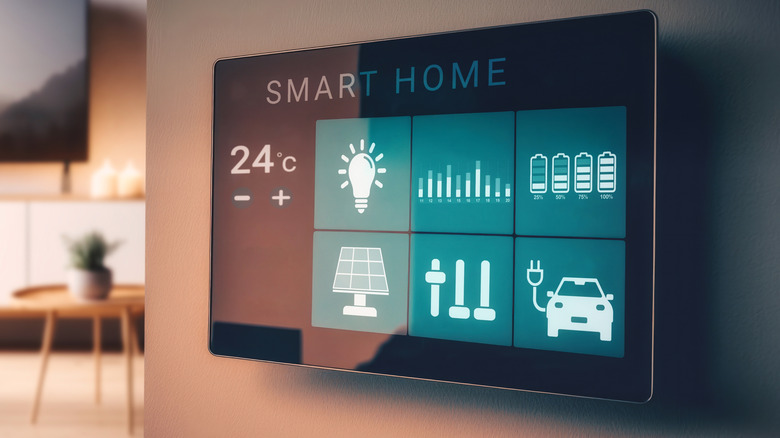Smart Lighting: What You Should Know Before Making The Switch
We may receive a commission on purchases made from links.
Turning the lights on and off more easily has been a goal since The Clapper was invented in the 1980s. The Clapper, originally called the "Great American Turn-On" (yes, seriously), was a device that turned lights and appliances on with a clap. It gained popularity quickly; the idea of turning lights on/off without crossing the room filled a need consumers didn't even know they had. However, the claps had to be just fast enough and just loud enough, background noise rendered it useless, and the lights would turn off at any clap-like noise in the house. The Clapper had introduced us to a future we only thought possible in movies, but the technology wasn't ready.
More than three decades later, and this idea has been implanted into every facet of our lives. According to Oberlo, 70 million homes in the U.S. are considered "smart" in 2024, and the number is estimated to hit 100 million by 2028. Much of that is due to smart lighting, which is a multibillion-dollar industry that's only getting more popular. Smart lights from companies like Amazon, Philips, and Linkind make our homes more efficient and our lives easier in the process ... most of the time. There are some disadvantages to smart home solutions, such as reliance on WiFi, cost, and privacy concerns that are important to understand before you decide if it's the right choice for your home.
The potential disadvantages of smart lighting throughout your home
The biggest disadvantage of smart lighting is the cost. Smart bulbs run around $7 to $50 a piece compared to regular LED bulbs, which are around $2 to $4 a piece. Smart switches are around $20 to $80 a piece, and if you plan on using smart lighting throughout your home, you will need to install a "smart hub" which can cost $60 to $300 (plus installation fees if necessary). It's been estimated that the average cost of automating lighting for an entire home is $1,000 to $3,000, depending on home size.
Another issue with smart lighting is that you need a strong WiFi or Bluetooth signal. If you live in an area with patchy service, it can be a real pain. When the WiFi goes out, you have to re-link your devices, and passwords may be involved too. It's not as easy as swapping out a dead light bulb or flipping a breaker. If your home still has regular light switches that are no longer in use, it can be hard to break the habit of switching them off when you leave a room, but doing so can cause your lighting setup to stop functioning.
Also, the initial learning curve can seem overwhelming to the non-techie, and house guests may need time to learn your home's setup. Not to mention any young children, who may have trouble with voice activation due to poor annunciation. Finally, some smart lighting systems collect data on your home, which may cause privacy concerns.
Should you switch to smart lighting in your house or not?
The advantages to smart lights are more obvious. You can turn lights on with your voice or control them with your phone when you aren't home. If you forget to switch lights off when heading out of town, you can do it from the airport. It can also act as a wireless home security system by turning lights on and off to foil would-be burglars. Another great benefit is that most smart bulbs can change colors or dim based on voice activation. Since lighting can affect your mood, sleep cycles, and even your appetite, adjusting lights throughout the day can actually be good for your health. An environmental bonus is that all smart lighting uses LED bulbs, which use a lot less energy and last much longer than traditional incandescent bulbs (and could outweigh the upfront added costs in the long run).
The lighting capabilities of the Amazon Alexa system and similar smart home hubs are staggering, but are they necessary for everyone? If you live in an area with bad WiFi, you may want to hold off on smart lighting until the issue is resolved. It also may not be the right time for you financially. As smart lighting becomes more commonplace, the prices will start to go down, so be patient! You can start small and try smart lighting in one room using regular (dumb) LED bulbs. These bulbs are cheaper and can be made "smart" with a smart plug, which runs under $30 and can be controlled via Alexa, Siri, and Google Assistant.


